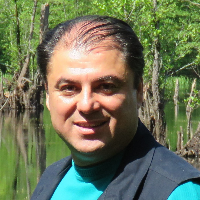Providing a Roadmap for the Adaption of Agricultural Sector to Water Scarcity Conditions (Case Study: Selected Crops of Tajan Basin, Iran)
In recent decades, the issue of climate change has become one of the global issues and has affected the agricultural sector. The continuation of agriculture regardless of the water shortage crisis has had an inappropriate effect on the sustainability and growth of this sector. On the other hand, the destructive effect of excessive use of chemical fertilizers and pesticides on water, soil, health of ecosystems, humans and other living beings is undeniable. For this reason, the void of using an efficient model that can provide all economic and environmental aspects at the same time was completely felt. The aim of this study was to provide an optimal cropping pattern using the integrated method of Goal and Grey planning. For this purpose, the farmers of the agronomy sub-sector of Tajan Basin were selected as the statistical population. In this regard, time series information was collected from the aggregation of the average data of 401 settlements located in this area during the years 2017-2021 from the annual reports of experts.
The Linear Programming (LP) Model quantifies an optimal way of integrating constraints to satisfy the objective function to optimize crop production and profits for irrigation farmers. To use LP, one must convert the problem into a mathematical model. To do this, an objective such as maximizing profit or minimizing losses is required. The model must also include decision variables that affect those objectives, and constraints that limit what user can do. Therefore, the LP Model is a single-objective method. Goal Programming (GP) is an extension of LP in which targets are specified for a set of constraints. GP is used to perform three types of analysis: Determining the required resources to achieve a desired set of objectives. Determining the degree of attainment of the goals with the available resources. Providing the best satisfying solution under a varying amount of resources and priorities of the goals. Thus, the GP model is a multi-objective method. The Grey system theory is identified as an effective methodology that can be used to solve uncertain problems with partially known information. Grey modelling approach uses accident data for estimating the model parameters. The model can reflect the dynamics, balance the conflicting the multidimensional targets of cropping patterns, and promoting the sustainable use of cultivated land. For achieving different goals in unstable economic and environmental conditions, we used a Goal-Grey model that was obtained from the integration of Goal programing and Grey Programing. The Goal-Grey model, by considering the uncertainty in the data, leads to overlap between the economic and environmental goals and provides the scope of cultivation for the selected products.
By estimating the Linear Programming (LP) Model, crops like wheat and canola are removed from the cropping pattern, while the cultivation areas for barley and high-yielding long-grain rice increase by 644% and 31%, respectively. In contrast, the cultivation areas for high-quality long-grain rice and maize decrease by 89% and 10%, respectively. Implementing this model boosts the gross profit of farmers in the Tajan region by 14% solely through adjusting the crop composition, without altering the current input levels. Additionally, the findings show that applying the LP Model results in fertilizer savings of 5%, 13%, and 10% for phosphate, nitrogen, and potash, respectively. The amount of herbicide and fungicide consumption in the LP Model is exactly equal to the current model of the region. However, the implementation of this model will lead to a 5% increase in the consumption of insecticides poison. The amount of irrigation water consumption in the LP Model was calculated to be 2% less than the current model of the region. In addition, the results indicate that by estimating the Goal-Grey Model, only canola is removed from the cropping pattern. Also, in order to achieve the defined goals in this study, the cultivation area of wheat and maize should be equal to 208 and 7356 hectares respectively. However, the flexibility of input usage enables adjustments to other crop cultivation areas, facilitating high-quality long-grain rice production on 970 to 18,157 hectares. Plus, the cultivation area of long-grain rice can vary from 7654 to 9995 hectares. In this model, barley can be removed from the crop composition like the linear pattern or cultivated on a maximum of 2553 hectares. The implementation of the Goal-Grey model will lead to a maximum 2% increase in the gross profit of the farmers of Tajan region compared to the current model of this region. Also, by implementing the Goal-Grey Model, on average, phosphate, nitrogen, and potash fertilizer consumption is saved by 16, 27, and 20 percent, respectively. In addition, with the implementation of the Goal-Grey Model, the consumption of agricultural pesticides will decrease from 733 to 355 thousand liters on average.
The LP Model is designed based on current regional conditions; however, as a single-objective model with fixed parameters, it lacks the flexibility to offer an adaptable program for farmers during drought or wet periods or when inputs are limited. Findings indicate that under current conditions, there is excessive use of chemical inputs and irrigation water. By accounting for data uncertainty, the Goal-Gray model addresses these limitations, balancing economic and environmental objectives and defining a cultivation range for selected crops.
-
Presenting Quantitative Approaches to Investigate the Importance of the Stakeholders of Ecosystem Services in Hyrcanian Forests
*, Sareh Hosseini, Sayed Mohsen Hosseini, Maryam Asadpour Kordi, Mahsa Taslimi, Yadollah Bostan
Ecology of Iranian Forests, -
The effect of attitudinal and sociological factors on tourists' willingness to pay for Helen Protected Forest in Chaharmahal and Bakhtiari Province, Iran
Z. Khalili *, H. Amirnezhad, S. Mohammadi Limaei, S. Salehi
Iranian Journal of Forest and Poplar Research,



